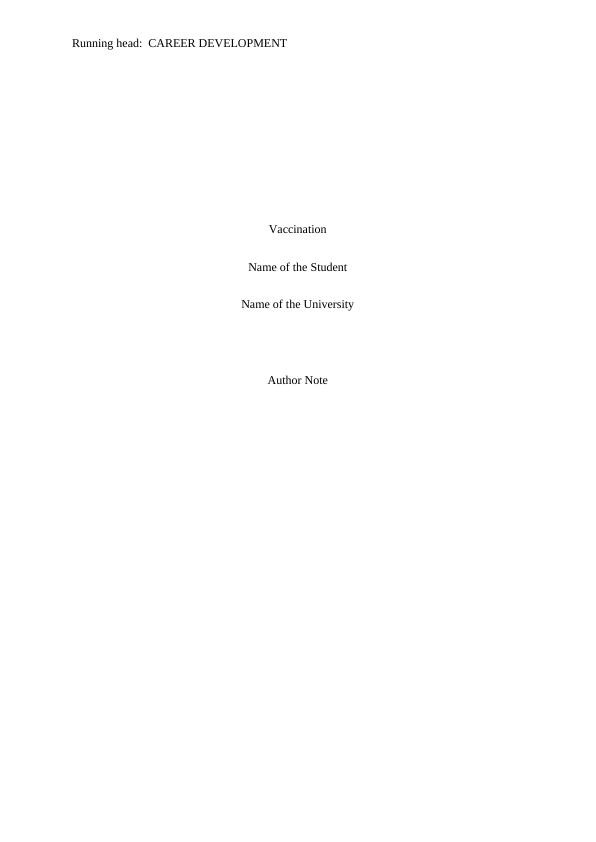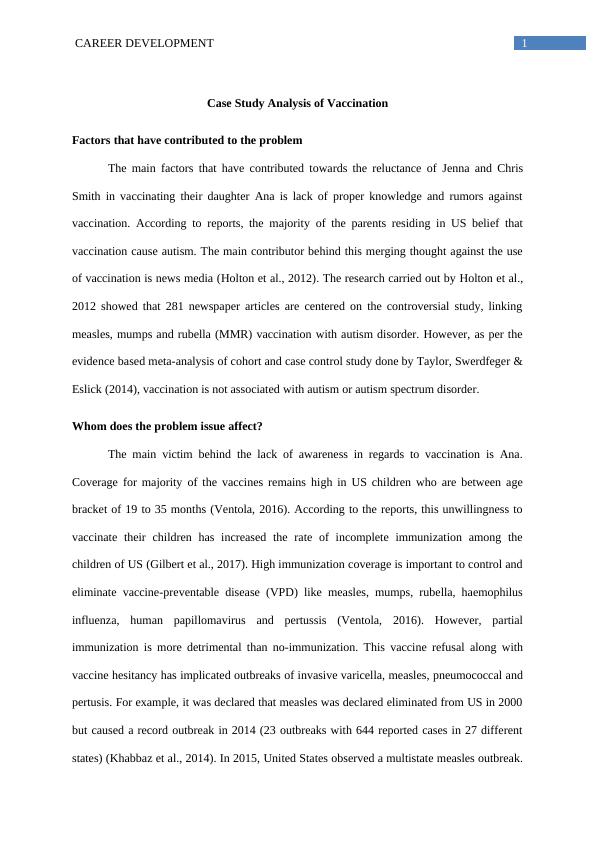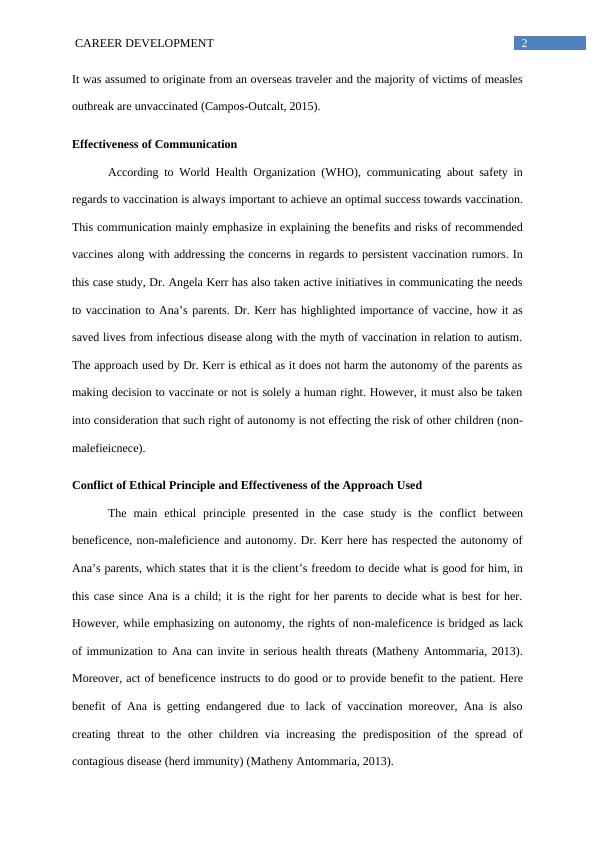Vaccination Factors that have Contributed to the Reluctance of Jenna and Chris Smith
7 Pages1465 Words400 Views
Added on 2020-05-16
About This Document
The research carried out by Holton et al., 2012 showed that 281 newspaper articles are centered on the controversial study, linking measles, mumps and rubella (MMR) vaccination with autism disorder. However, as per the evidence based meta-analysis of cohort and case control study done by Taylor, Swerdfeger & Eslick (2014), vaccination is not associated with autism or autism spectrum disorder. High immunization coverage is important to control and eliminate vaccine-preventable disease (VPD) like
Vaccination Factors that have Contributed to the Reluctance of Jenna and Chris Smith
Added on 2020-05-16
ShareRelated Documents
End of preview
Want to access all the pages? Upload your documents or become a member.
Paper on Relation between the Mumps Measles and Rubella Vaccine
|8
|1863
|54
Evidence of Immunisation Safety
|12
|2803
|25
Matern Child Health Journal
|7
|5431
|12
Methods for Nurses to Influence Health Policies and Childhood Immunization Controversy
|5
|1222
|236
(PDF) Vaccination benefits, risks and safety
|8
|2359
|30
VALUE FOR VACCINE
|1
|1553
|19



